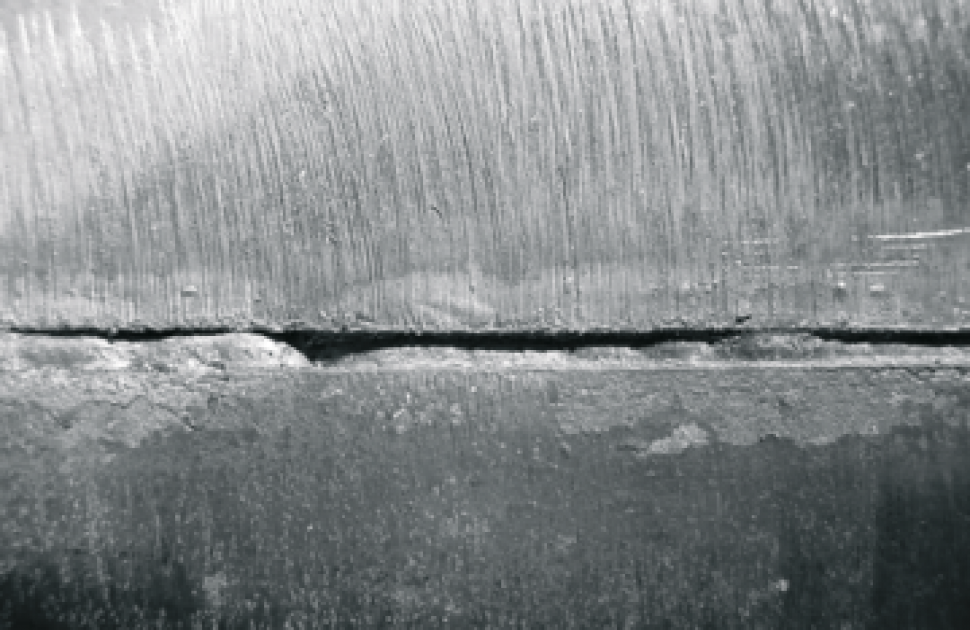Your Complete Handbook to Preventing Weld Undercut Like a Pro
Your Complete Handbook to Preventing Weld Undercut Like a Pro
Blog Article
Recognizing the Causes and Solutions for Undercut Welding in Metal Manufacture Processes
In the realm of metal manufacture procedures, the incident of undercut welding postures a substantial difficulty that demands a detailed understanding of its reasons and sensible remedies. The intricate interaction of different factors throughout welding procedures can result in this unfavorable sensation, impacting the architectural honesty and general quality of the welded joints - Preventing weld undercut. By dissecting the source of undercut welding and checking out reliable restorative actions, producers can raise the standard of their craftsmanship and make sure the production of flawless metal elements
Common Reasons For Undercut Welding
Frequently neglected in metal construction, undercut welding occurs due to numerous elements that demand meticulous focus and knowledge to be properly alleviated. In addition, incorrect welding methods, such as using the incorrect welding angle or take a trip speed, can also contribute to damage development. The option of welding parameters, such as voltage, existing, and cord feed speed, plays a significant role in the incident of undercut welding.
Effect of Incorrect Welding Parameters
Inaccurate welding parameters can substantially endanger the integrity and quality of bonded joints in steel fabrication processes. The impact of incorrect welding specifications materializes in different means, leading to architectural weaknesses and issues in the welded elements. One crucial aspect affected by inappropriate welding parameters is the infiltration deepness of the weld. Inadequate warm input due to low welding currents or excessively high traveling rates can cause insufficient combination between the base steels, bring about incomplete joint infiltration and deteriorated bonds. On the other hand, excessive warm input triggered by high welding currents or slow traveling rates can lead to burn-through and too much reinforcement, producing a fragile and unstable weld framework. In addition, inaccurate criteria such as incorrect voltage setups or incorrect electrode angles can add to erratic weld grain accounts, absence of combination, and raised chances of problems like damaging. Meticulous interest to welding specifications is paramount to guarantee the manufacturing of premium welds with the wanted mechanical buildings and structural stability.
Effect of Improper Torch Angle
Improper torch angle in welding procedures can significantly influence the top quality and stability of the final weld joints in steel manufacture procedures. The lantern angle plays a vital role in identifying the warmth input and distribution during welding. When the lantern angle is inaccurate, concerns such as undercutting can develop. Undercutting is a typical welding defect where a groove creates along the weld toe, weakening the joint and jeopardizing its architectural integrity.
A lantern angle that is too high can result in inadequate penetration, insufficient combination, and increased spatter. On the various other hand, a lantern angle that is also shallow can result in too much infiltration, burn-through, and distortion of the base material. Preventing weld undercut. Proper torch angle is necessary for making certain constant weld his response quality, strength, and look
To avoid undercutting and other defects triggered by improper lantern angles, welders should be educated to maintain the appropriate lantern angle throughout the welding process. Routine tracking and change of torch angles during welding can assist attain sound welds with marginal issues.
Role of Inadequate Welding Strategies

An additional element of insufficient welding strategies is incorrect weld prep work. Insufficient cleaning of the base steels, incorrect joint layout, or not enough side preparation can all add to undercut welding. Furthermore, insufficient shielding gas insurance coverage or utilizing the wrong sort of gas can lead to insufficient fusion and the formation of undercut problems.
To resolve the duty of insufficient welding methods in metal construction processes, it is necessary to supply thorough training for welders. Correct education and learning on welding specifications, joint prep work, and securing gas selection can assist avoid undercut welding and guarantee top notch welds in steel look at more info construction projects.
Efficient Solutions for Undercut Welding
Dealing with undercut welding in metal manufacture requires executing efficient solutions to enhance weld top quality and architectural integrity. One of the key remedies to combat undercut is to readjust welding specifications such as voltage, present, and take a trip rate to make certain proper warmth input and fusion. By fine-tuning these setups, welders can stop excessive melting of the base metal and filler material, lowering the probability of undercut development.
Furthermore, appropriate joint prep work is critical in stopping undercut. Guaranteeing tidy base metal surface areas without contaminants and using the ideal bevel angle can aid promote far better weld penetration and minimize the danger of undercut - Preventing weld undercut. Using appropriate welding techniques, such as oscillating the torch or weaving, can likewise help in dispersing warmth equally and filling up the weld joint sufficiently, lessening the possibility of undercut issues
Furthermore, selecting the proper welding consumables, including electrodes and filler metals, is essential in minimizing undercut. Making use of products with ideal chemical compositions and mechanical buildings can contribute to achieving audio welds with very little undercut. Normal evaluation and quality control measures ought to additionally be executed to detect and address undercut issues without delay, making certain the overall integrity of fabricated steel parts.

Verdict
In verdict, understanding the reasons and solutions for undercut welding in steel fabrication procedures is important for achieving high-quality welds. By attending to typical reasons such as inaccurate welding parameters, inappropriate torch angle, and insufficient welding techniques, welders can prevent undercutting and ensure strong, durable welds. It is necessary to focus on these aspects and carry out efficient remedies to enhance the overall welding procedure and end product top quality.

Report this page